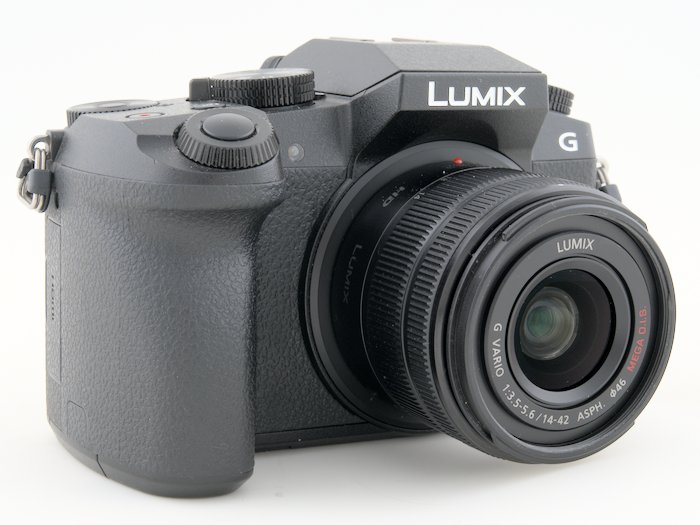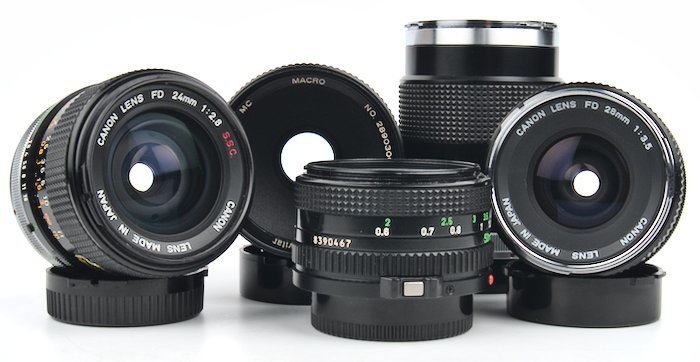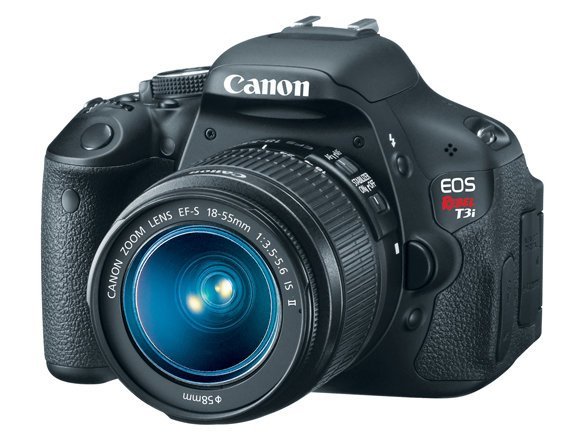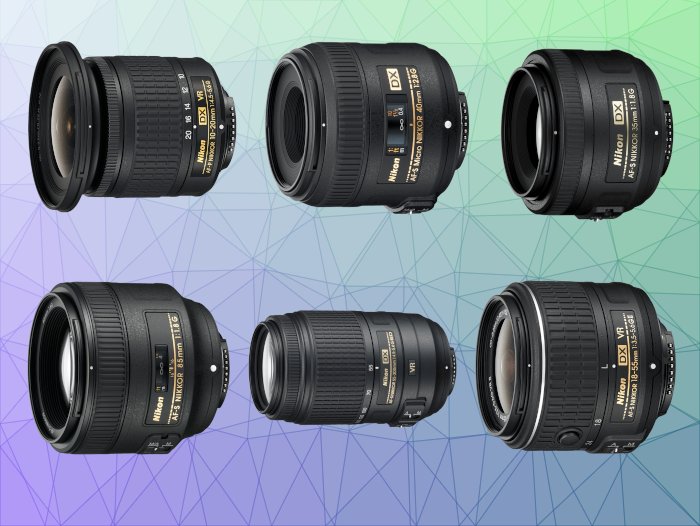
Unpacking the Power and Potential of the Panasonic Lumix G7
- Nathaniel Stephan
- Panasonic g7
- February 7, 2023
Table of Contents
The Panasonic Lumix G7, a celebrated entrant in the world of digital photography since its release in 2015, remains an enduring favorite amongst photographers, from neophytes to seasoned professionals.
This camera stands out in the market, offering a suite of features like a fully articulating flip screen, 4K video, clean HDMI out, zebra strips, and focus peaking—elements often missing in similarly priced models.
However, while it boasts excellent image quality and intuitive controls, the Lumix G7 is not without its limitations. Notably, its larger size and weight in comparison to other models with bigger sensors can pose challenges, and its contrast-detect autofocus system can falter in fast-action or low-light photography.
This article aims to navigate the myriad features, technicalities, and potential drawbacks of the Lumix G7, providing an in-depth look at its image sensor, file formats, video capabilities, autofocus system, and battery life to equip new photographers with a comprehensive understanding of this camera’s capabilities.
Alternative Cameras
Comparable competitive camera models at the time of release would have been:
- Olympus OM-D E-M1
- Olympus E-M10
- Panasonic GX7
- Sony A6000
- Canon Rebel T6i
- Canon Rebel SL1
- Nikon D3300
Panasonic G7 Specs
https://www.outsidetheshot.com/panasonic/panasonic/panasonic-lumix-g7-sd-card.jpg does not existType
| Type | Digital Single Lens Mirrorless camera |
|---|---|
| Recording media | SD Memory Card, SDHC Memory Card, SDXC Memory Card (Compatible with UHS-I / UHS-II UHS Speed Class 3 standard SDHC / SDXC Memory Cards) |
| Image sensor size | 17.3 x 13.0 mm (in 4:3 aspect ratio) |
| Lens mount | Micro Four Thirds mount |
Panasonic G7 Memory Card Compatibility
Image Sensor
At the heart of the Lumix G7 is a 16MP Micro Four Thirds (MFT) image sensor. The MFT sensor is smaller than APS-C or full-frame sensors, but it has proven to be capable of delivering high-quality images.
- Size and Resolution: The MFT sensor in the G7 is approximately 18 mm x 13.5 mm. With its 16-megapixel resolution, it can capture detailed and sharp images.
- Low Light Performance: Despite its smaller size, the Lumix G7 performs admirably in low-light situations, thanks to the sophisticated noise reduction algorithms of the camera’s Venus Engine image processor.
- Dynamic Range: The Lumix G7 has a respectable dynamic range, allowing for good detail retention in shadows and highlights in challenging light conditions.
| Type | Live MOS Sensor |
| Camera effective pixels | 16.00 Megapixels |
| Color filter | Primary color filter |
| Dust reduction system | Supersonic wave filter |
File Formats
The Lumix G7 provides options for shooting in both JPEG and RAW formats.
- JPEG: This is a compressed file format, which is easier to share and store due to its smaller file size. However, it provides less flexibility when it comes to post-processing.
- RAW: This format captures all data from the sensor without any compression or processing. Shooting in RAW allows for the highest quality images and greater flexibility during post-processing.
| Still image | JPEG (DCF, Exif 2.3), RAW, MPO (When attaching 3D lens in Micro Four Thirds system standard) |
| Motion picture | AVCHD (Audio format: Dolby Digital 2ch), MP4 (Audio format AAC 2ch) |
| Aspect ratio | 4:3, 3:2, 16:9, 1:1 |
| Image quality | RAW, RAW+Fine, RAW+Standard, Fine, Standard |
| Image quality | MPO+Fine / MPO+Standard (with 3D lens in Micro Four Thirds system standard) |
| Color Space | sRGB, AdobeRGB |
Image File Sizes
[4:3] 4592x3448(L) / 3232x2424(M) / 2272x1704(S) / 1824x1368 (When attaching 3D lens in Micro Four Third system standard) [3:2] 4592x3064(L) / 3232x2160(M) / 2272x1520(S) / 1824x1216 (When attaching 3D lens in Micro Four Third system standard) [16:9] 4592x2584(L) / 3840x2160(M) / 1920x1080(S) / 1824x1024 (When attaching 3D lens in Micro Four Third system standard) [1:1] 3424x3424(L) / 2416x2416(M) / 1712x1712(S) / 1712x1712 (When attaching 3D lens in Micro Four Third system standard)
Video Formats
One of the standout features of the Lumix G7 is its 4K video capabilities.
- The camera can record 4K UHD video (3840x2160) at 24p and 30p. In addition to this, it can also capture Full HD (1920x1080) at up to 60p.
- The G7 includes a 4K Photo Mode that allows users to extract 8MP still images from 4K video footage, ensuring that you never miss a moment.
- The camera also offers Full HD high-speed video at 60 fps for slow-motion playback.
[4K] 3840x2160:4K/30p 100Mbps, 4K/24p 100Mbps [Full HD] 1920x1080:FHD/60p 28Mbps, FHD/30p: 20Mbps [HD] 1280x720:HD/30p 10Mbps [VGA] 640x480:VGA/30p 4Mbps [4K] 3840x2160:4K/25p 100Mbps, 4K/24p 100Mbps [Full HD] 1920x1080:FHD/50p 28Mbps, FHD/25p: 20Mbps [HD] 1280x720:HD/25p 10Mbps [VGA] 640x480:VGA/25p 4Mbps [Full HD] 1920x1080:FHD/60p 28Mbps, 60p recording [Full HD] 1920x1080:FHD/60i 17Mbps, 60i recording [Full HD] 1920x1080:FHD/30p 24Mbps, 60i recording (sensor output is 30fps) [Full HD] 1920x1080:FHD/24p 24Mbps [Full HD] 1920x1080:FHD/50p 28Mbps, 50p recording [Full HD] 1920x1080:FHD/50i 17Mbps, 50i recording [Full HD] 1920x1080:FHD/25p 24Mbps, 50i recording (sensor output is 25fps) [Full HD] 1920x1080:FHD/24p 24Mbps
Wifi
| WiFi | IEEE 802.11b/g/n, 2412 MHz - 2462 MHz (1-11 ch), Wi-Fi / WPA / WPA2, Infrastructure mode |
| NFC | No |
| QR Code Connection | Yes |
| Password-less connection | Yes (ON / OFF selectable) |
Viewfinder
| Type | OLED Live View Finder (2,360k dots) |
| Field of view | Approx. 100% |
| Magnification | Approx. 1.4x / 0.7x (35mm camera equivalent) with 50 mm lens at infinity; -1.0 m-1 |
| Eye point | Approx. 17.5 mm from eyepiece lens |
| Diopter adjustment | -4.0 - +4.0 (dpt) |
| Eye sensor | Yes |
| Eye sensor adjustment | High / Low |
Autofocus
The Lumix G7 employs a Depth from Defocus (DFD) autofocus system, which is both fast and accurate.
- Speed: The DFD technology helps achieve ultra-high-speed autofocusing of approximately 0.07 sec.
- 49 Focus Points: The camera has 49 autofocus points that cover a large portion of the image area, offering flexibility in composing shots.
- Face/Eye Detection: The Lumix G7 also includes face and eye detection autofocus modes, which can be particularly useful for portrait photography.
| Type | Contrast AF system |
| DFD technology | Yes |
| Focus mode | AFS (Single) / AFF (Flexible) / AFC (Continuous) / MF |
| AF mode | Face/Eye Detection / Tracking / 49-Area / Custom Multi / 1-Area / Pinpoint |
| AF mode | (Full area touch is available) |
| AF detective range | EV -4 - 18 (ISO100 equivalent) |
| Starlight AF | Yes |
| AF assist lamp | Yes |
| AF lock | Yes (AF/AE LOCK button) |
| Others | One Shot AF, Shutter AF, Half Press Release, Quick AF, Continuous AF (during motion picture recording), Eye Sensor AF, AF+MF, MF Assist, Touch MF Assist, Focus Peaking, Touch AF/AE Function, Touch Pad AF, Touch Shutter |
Exposure Control
| Light metering system | 1728-zone multi-pattern sensing system |
| Light metering mode | Multiple / Center Weighted / Spot |
| Metering range | EV 0 - 18 (F2.0 lens, ISO100 equivalent) |
| Exposure mode | Program AE, Aperture Priority AE, Shutter Priority AE, Manual, |
| ISO sensitivity (Standard Output Sensitivity) | Auto / Intelligent ISO / 100 (Extended) / 200 / 400 / 800 / 1600 / 3200 / 6400 / 12800 / 25600 (Changeable to 1/3 EV step) |
| ISO sensitivity (Standard Output Sensitivity) | (Up to ISO6400 in motion picture recording) (ISO Auto in M mode) |
| Exposure compensation | 1/3 EV step ±5EV (±3EV for motion picture) |
| AE lock | Yes (AF/AE LOCK button) |
| AE bracket | 3, 5, 7 frames in 1/3, 2/3 or 1 EV Step, Max. ±3 EV, single/burst |
White Balance
| White balance | Auto / Daylight / Cloudy / Shade / incandescent / Flash / White Set 1, 2, 3, 4 / Color temperature setting |
| White balance adjustment | Blue/Amber bias, Magenta/Green bias |
| Color temperature setting | 2500-10000K in 100K |
| White balance bracket | 3 exposures in blue/amber axis or in magenta/green axis |
Shutter
| Type | Focal-plane shutter |
| Shutter speed | Still image: Bulb (Max. 2 minutes), 1/4,000 - 60 |
| Shutter speed | Motion picture: 1/16,000 - 1/25 |
| Shutter speed | Electronic shutter: 1/16,000 - 1 |
| Self timer | 10sec, 3 images / 2sec / 10sec |
| Remote control | Remote control with Bulb function by DMW-RSL1 (Optional) |
Battery
The Lumix G7 uses a DMW-BLC12 battery that is rated for approximately 350 shots per charge. This makes it a reliable companion for most shooting scenarios, but for longer shoots or travels, carrying an extra battery is advisable.
| Battery | Li-ion Battery Pack (7.2V, 1200mAh, 8.7Wh) (Included) |
| Battery | Battery Charger |
| Battery life (CIPA standard) | Approx. 360 images with H-FS1442A (TBD) |
| Battery life (CIPA standard) | Approx. 350 images with H-FS14140 (TBD) |
| Battery life (CIPA standard) | Approx. 350 images with H-FS45150 (TBD) |
Dimensions and Weight
| Dimensions (W x H x D) | 124.9 x 86.2 x 77.4 mm / 4.92 x 3.39 x 3.05 inch (excluding protrusions) |
| Weight | Approx. 415g / 0.91 lb (SD card, Battery, Body) (TBD) |
| Weight | Approx. 365g / 0.80 lb (Body only) (TBD) |
| Weight | Approx. 525g / 1.16 lb (SD card, Battery, H-FS1442A lens included) (TBD) |
| Weight | Approx. 680g / 1.50 lb (SD card, Battery, H-FS14140 lens included) (TBD) |
| Weight | Approx. 615g / 1.36 lb (SD card, Battery, H-FS45150 lens included) (TBD) |
| Weight | Approx. 725g / 1.61 lb (SD card, Battery, H-FS1442A + H-FS45150 lenses included) (TBD) |
Firmware
The latest firmware version for the G7 is Ver.2.2 released on Jul. 20, 2016. The firmware, along with upgrade instructions, can be found on the Panasonic support download page.
Conclusion
The Panasonic Lumix G7 is an excellent entry-level mirrorless camera that offers a lot of features typically found on higher-end models. With its good image quality, superb 4K video capabilities, fast autofocus, and decent battery life, it provides fantastic value for photographers stepping into the world of advanced photography. Regardless of your skill level or photography style, the G7 is a versatile tool that can adapt to your needs, making it a worthy consideration for your photography journey.


